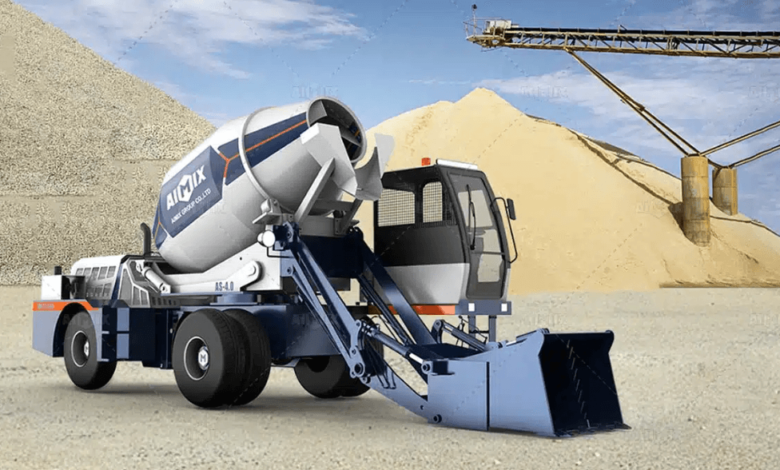self loading mixer: The Key to Smooth Execution in Small-to-Medium Construction Projects

The construction industry is evolving at an unprecedented pace, with automation, efficiency, and sustainability at the heart of modern project planning. In this transformation, the self loading mixer is playing a key role, especially in small-to-medium-scale construction ventures. Whether it’s building houses, retail spaces, small factories, or roadways, this multipurpose machine has redefined how concrete and construction materials are handled on-site.
Compact, self-reliant, and smartly engineered, the self loading mixer is designed to simplify on-site concrete preparation while reducing time, cost, and manpower.
This article explores the crucial role of Self Loading Mixer in modern project execution, highlighting how they contribute to smarter, faster, and more cost-effective construction—without compromising on quality.
The Growing Demand for Efficient Construction Solutions
Construction projects today are no longer limited to massive infrastructure works. Across cities and towns, small developers, contractors, and independent builders are taking on projects such as:
- Residential buildings
- Small industrial units
- Agricultural storage sheds
- Commercial complexes
- Road repair and paving
Mistakes in material mixing, labor inefficiencies, or equipment delays can lead to cost overruns or missed deadlines.
See also: ESG Reporting Software: The Smart Solution for a Sustainable Business Future
What Makes a self loading mixer Ideal for Small-to-Medium Jobs?
A self loading mixer combines multiple functions into a single machine:
- Scoops and loads materials like cement, aggregates, and sand
- Mixes them in an onboard rotating drum
- Dispenses water through a calibrated water tank
- Transports and pours the concrete directly on-site
This all-in-one functionality reduces the number of machines and workers needed on-site. It minimizes logistical complications and ensures that the concrete is fresh and ready to pour at any time.
A Day in the Life of a self loading mixer on a Job Site
Let’s walk through a real-world scenario: A construction team is building a 4-story apartment block in a suburban neighborhood.
Morning Start:
The operator starts the self loading mixer, checks fluid levels, and performs a 5-minute inspection. No separate loader or batching station is needed. Raw materials are stored at the site perimeter.
8:30 AM:
The operator uses the machine’s hydraulic shovel to load sand, gravel, and cement into the drum. The digital weighing system ensures correct proportions.
8:40 AM:
The water tank injects the exact amount of water required. The drum rotates and blends the materials into a uniform concrete mix.
8:50 AM:
The machine drives to the rear end of the construction area where footings are being prepared. It rotates the drum and pours the concrete directly where needed.
Rinse and Repeat:
The operator returns, reloads, and repeats the cycle—achieving 10–12 batches per shift, depending on distance and capacity.
This efficient workflow minimizes delays and maximizes daily output.
Key Features of a Modern self loading mixer
Let’s take a look at the defining features that make this machine ideal for smaller-scale jobs:
| Feature | Benefit |
| Compact Design | Fits in tight urban or residential spaces |
| 4×4 All-Terrain Mobility | Operates on uneven ground, slopes, or mud |
| Digital Weighing System | Ensures batch accuracy and consistency |
| Joystick & Dashboard Control | Easy handling by a single operator |
| 270° or 360° Discharge Drum | Pour at precise angles to avoid wastage |
| Onboard Water System | Controls moisture content in real-time |
Cost Advantages for Smaller Projects
Budget is a major concern for smaller construction businesses. The self loading mixer delivers excellent value over time. Here’s how:
- Reduced Labor Costs: One machine, one operator.
- No Transit Costs: No need for separate delivery trucks or batching plant services.
- Minimized Wastage: Materials are measured accurately—no overmixing or discards.
- Improved Project Timelines: Faster mixing and pouring means earlier project completion.
For contractors handling multiple small projects throughout the year, the investment pays off quickly.
Safety, Reliability, and Performance
Another often-overlooked benefit of the self loading mixer is enhanced on-site safety and equipment reliability. By reducing the number of moving parts (such as external loaders and transport trucks), the machine minimizes the risk of accidents.
- Backup cameras and alarms
- Enclosed operator cabin with climate control
- Emergency brake and shutdown systems
- Low-noise and low-emission engines
This allows construction work to continue in noise-sensitive or environmentally restricted zones without causing disruption.
Here are some practical project examples where a self loading mixer proves exceptionally useful:
🏠 Housing Developments
From foundations to floor slabs and driveways, one machine can serve multiple units in a single day.
🚜 Farm & Warehouse Construction
Ideal for mixing concrete for storage sheds, grain bins, or livestock enclosures in remote areas.
🛣️ Road Maintenance
Quick patching and repair work on municipal roads can be completed without needing batching support.
🏢 School or Community Building Projects
Perfect for government-funded or community initiatives in rural areas, where resources are limited.
Conclusion: Why self loading mixer is a Must-Have for Small Contractors
In a world where every second and dollar counts, the self loading mixer stands out as a strategic investment for small-to-medium construction companies. It empowers teams to mix and pour concrete on-demand, reduce reliance on outside vendors, and speed up delivery—all while maintaining high-quality standards.
Whether you’re managing a single family home or a multi-unit development, this machine transforms the way you work—one batch at a time.





